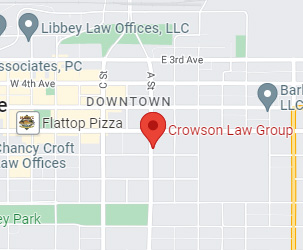Elements of a Negligence Case

Negligence cases are brought against large corporations and individuals. These cases are complicated because they deal with the legal concept of negligence in addition to physical injuries and property damage. In this article, learn the elements that constitute a negligence case and what you need to prove to win.
What is Negligence?
Negligence is a failure to take reasonable care to avoid causing injury or loss to another person. It can be either civil negligence, where someone is sued for damages, or criminal negligence, where someone is charged with a crime.
Elements of a Negligence Case
Certain elements must be present for negligence to occur, including:
- The defendant must owe the plaintiff a duty of care. This means that the defendant must have been reasonably expected to know that their actions could cause harm to the plaintiff.
- The defendant must have breached their duty of care by failing to take reasonable precautions to avoid causing harm.
- The plaintiff must have suffered damages due to the defendant’s breach of duty.
- The damages suffered by the plaintiff must have been reasonably foreseeable by the defendant.
- There must be a causal link between the defendant’s breach of duty of care and the damages suffered by the plaintiff.
- Duty of Care
In a negligence case, the first element that must be present is a duty of care. The person or entity who owed the duty must have been careless in some way. For example, if a doctor failed to provide adequate medical care to a patient, the doctor would be said to have breached their duty of care.
- Breach of Duty
To win a negligence case, plaintiffs must first prove that the defendant owed them a duty of care. This duty may be imposed by law or arising from the parties relationship. For example, drivers have a duty to operate their vehicles reasonably safely, and property owners have a duty to maintain their premises reasonably safe. Once the plaintiff has established that the defendant owed them a duty of care, they must show that the defendant breached that duty.
There are many ways in which a defendant can breach their duty of care. Some common examples include driving recklessly, failing to maintain proper safety equipment on their property, or failing to warn visitors of potential hazards. If the plaintiff can show that the defendant’s actions or inaction constituted a breach of their duty of care, they will need to prove that this breach resulted in their injuries.
- Proximate Cause
For a plaintiff to win a negligence case, they must prove that the defendant’s actions were the proximate cause of their injuries. Proximate cause is the “legal causation of an injury or damage by another’s act or omission.” In other words, the plaintiff must show that it was reasonably foreseeable that the defendant’s actions could lead to the plaintiff’s injuries.
There are two types of proximate causes:
- Cause-in-fact is “the actual cause of an injury or damage.” In other words, this type of proximate cause requires the plaintiff to show that the defendant’s actions were responsible for their injuries.
- Legal causation, however, requires the plaintiff to show that the defendant’s actions were a “substantial factor” in causing their injuries.
- Damages
If you’ve been injured because of someone else’s negligence, you may be able to recover damages. Damages are compensation the court awards to a plaintiff in a civil lawsuit. They are meant to make the plaintiff “whole again” by putting them in the position they would have been in if the injury had never occurred.
There are two types of damage you could recover in a personal injury case:
- Compensatory damages. Compensatory damages are intended to cover the actual losses suffered by the plaintiff. This includes medical bills, lost wages, and pain and suffering.
- Punitive damages. Punitive damages, on the other hand, are not meant to compensate the plaintiff but to punish the defendant for their willful or reckless behavior.
The damages a plaintiff can recover will depend on the facts of their case. If you’ve been injured because of someone else’s negligence, you must consult experienced Anchorage attorneys who can help you understand your legal rights and options.
- Foreseeability
For a negligence case to be successful, it must be shown that the defendant could reasonably have foreseen their actions might harm another person. This is known as the principle of foreseeability. If it can be shown that the defendant could not have reasonably foreseen the consequences of their actions, then they will not be held liable for any resulting damages.
The key elements must be present for a negligence case to be successful: duty of care, breach of duty, causation, damages, and foreseeability. If you believe someone has breached their duty of care towards you and caused you harm, you may have grounds for a negligence claim. Be sure to speak with a qualified legal professional to discuss your specific situation and determine whether or not you have a case.


